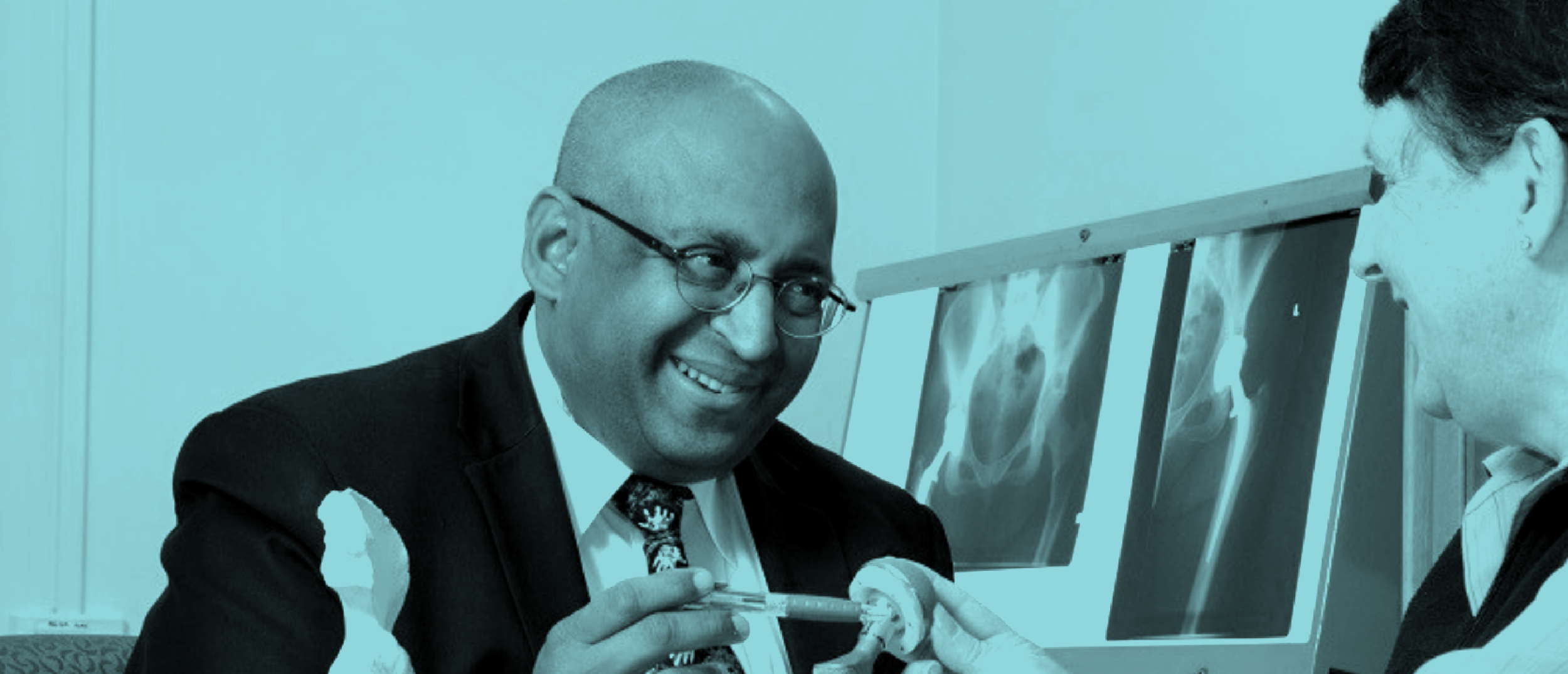
Total Knee Replacement
Two million Australians have arthritis of the knee and 60,000 undergo knee replacement surgery every year.
Our orthopaedic team will always consider all factors relating to your case. Including your family life, work commitments and lifestyle choices. We aim to find non-invasive treatment options, but when surgery is required, our team operates at a number of prestigious and convenient hospitals.
Total Knee Replacement (TKR) or Total Knee Arthroplasty is indicated in end stage arthritis. The most common cause of this is osteoarthritis, which is in turn caused by the wearing away of the cartilage tissue in the knee joint. Other possible knee problems requiring TKR include:
Rheumatoid arthritis
Haemophilia
Gout (leading to arthritis due to excess uric acid in the bloodstream)
Osteonecrosis (avascular necrosis) – death of bone tissue caused by lack of blood supply
Bone growth disorders such as bone ‘dysplasia’
Sequelae of infection
TKR is one of the most successful surgeries in orthopaedics, after Total hip replacements to improve mobility, function and quality of life. 85-90% of patients who undergo total knee replacement are happy with the results of surgery, with a considerable reduction in pain and a significant improvement in quality of life.
The goals of knee replacement surgery are restoration of limb alignment, appropriate ligament balance and a well tracking extensor mechanism (patella and its tendon attachments). New technologies are increasingly being used to achieve these goals. Computer assisted surgery (CAS) in Total knee arthroplasty, abbreviated to CAS-TKA and Robotic-Assisted TKA are some of such technologies.
Download our guide on Total Knee Replacement procedure and rehabilitation below.
Other Treatments
Prof Jegan Krishnan
Explains how a total knee replacement surgery takes place with The Joint Replacement Clinic.
Dr Sunil Reddy
Explains how a total knee replacement surgery takes place with The Joint Replacement Clinic.
Get in touch with our friendly team today to begin your journey to renewed mobility
Fill in our contact form and our experienced team will get back to you
Robotic-Assisted Total Knee Replacement
The robotic assisted total knee replacement procedure is a relatively new technique (introduced in Australia in 2017) which utilises a special robotic arm during surgery to ensure accurate placement of the artificial joint components.
The technique is so new that there are as yet no long-term studies giving any indication of whether this new approach leads to better outcomes than the traditional procedure.
However short-term studies indicate a high degree of prosthesis placement accuracy which ultimately could lead to shorter recovery times and less likelihood of the artificial joint needing revision surgery down the track.
Robotic Assisted Knee Replacement Procedure
Prof Krishnan and Dr Reddy offer robotic assisted total knee replacements to all patients.
Robotic systems can be active (No direct surgeon involvement) or semi-active (Surgeon performs procedure with assistance and feedback from robotic system). All robotic TKR systems currently used are semi- active and require a pre-approved plan controlled by the surgeon. This plan could be from imaging like CT scan performed before surgery or from intra-operative registration to generate 3D-bone model of patient’s knee.
In some systems CT scans are taken before surgery to get a clear picture of the architecture of the existing knee joint. Once the procedure begins, special probes are placed immediately above and below the knee via small incisions.
The robotic arm, guided by the CT scan information or / and real-time feedback from the probes, then prepares the bone surfaces on the thigh bone and the shin bone to a very high degree of accuracy. The arm then cuts the bone surface of the knee joint and the artificial joint is inserted and fixed in place.
In all other respects the procedure is identical to the normal total knee replacement procedure.
Although the robotic assisted procedure allows for greater accuracy in terms of measurements and accuracy of bone surface preparation, the procedure takes the same amount of time as the standard procedure and requires more time for preparation ahead of surgery.
In some cases, the robotic approach may need to be abandoned and surgery completed using the conventional approach.
The Joint Replacement Clinic offers robotic-assisted total knee replacement surgery to all patients at no out of pocket expense to all privately insured patients.
Do you have joint pain? Would you like to investigate gap-free options?
Fill out our contact form and one of our experienced team will be in touch





